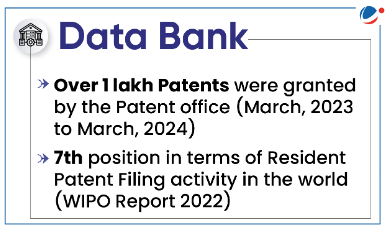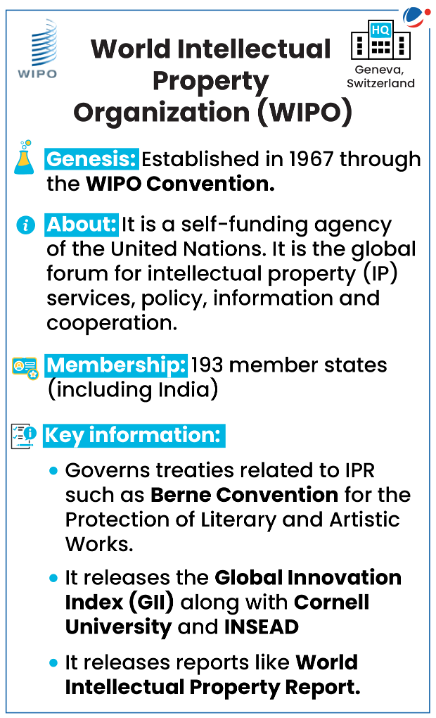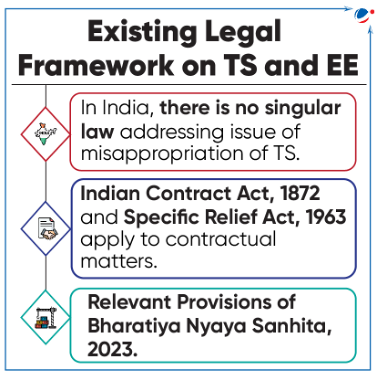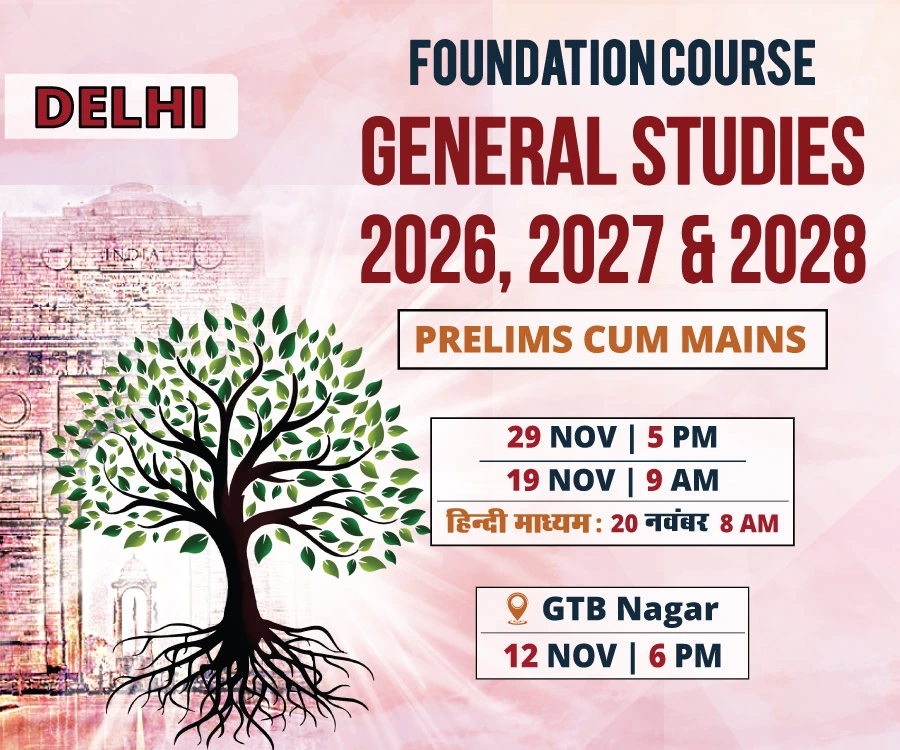Why in the News?
Patents (Amendment) Rules, 2024 have been notified by the Department for Promotion of Industry and Internal Trade, Ministry of Commerce and Industry.
More about the news
- Patents (Amendment) Rules, 2024 have been notified under the Patents Act, 1970.
- Section 159 of the Act empowers the Central Government to make rules for implementing the Act and regulating patent administration.
- Patents (Amendment) Rules, 2024 have amended the Patents Rules, 2003.
- The objective of amendment is to foster innovation by creating a conducive environment for inventors and creators.

Key Provisions of the Patents (Amendment) Rules, 2024
- Certificate of Inventorship: It has been introduced to acknowledge the contribution of inventors in the patented invention.
- Time limit: For filing request for examination, time limit has been reduced from 48 months to 31 months.
- Time limit to furnish foreign application filing details has been changed from six months to three months.
- Renewal fee: It has been reduced by 10% if paid in advance through electronic mode for a period of at least 4 years.
- Frequency to file the statements of working of patents: It has been reduced from once in a financial year to once in every three financial years.
About Patents and their governance
- A patent is an exclusive Intellectual Property Right (IPR) granted for an invention, which is a product or a process that provides a new way of doing something or offers a new technical solution to a problem.
- To get a patent, technical information about the invention must be disclosed to the public in a patent application.
- Patent protection means that the invention cannot be commercially made, used, distributed, imported or sold by others without the patent owner's consent.
- Patents are territorial rights, only applicable in the country or region in which a patent has been filed and granted.
- Criteria for an invention to be patentable:
- It should be novel.
- Must involve an inventive step.
- Capable of industrial application.
- It should not fall under the categories of inventions that are excluded from patentability under the concerned jurisdiction.
Conventions/Treaties Related with the Patents
|
Regulation of Patents
Global
- World Intellectual Property Organization (WIPO) regulates the Patent and other IPR.
- WIPO administers conventions and Treaties related to patents (refer to box).
- Under Trade-Related Aspects of Intellectual Property Rights (TRIPS), an agreement of the World Trade Organisation (WTO) was signed in 1994.
- It is the most comprehensive multilateral agreement on IP.
- It plays a central role in facilitating trade in knowledge and creativity, in resolving trade disputes over IP.

India
- Regulated by the Patents Act, 1970. It repealed the Indian Patents and Designs Act, 1911.
- It has been amended thrice, in 1999, 2002, and 2005.
- The Amendment of 2005 ensured compliance of the Patents Act, 1970 with the WTO TRIPS Agreement.
- Amendment extended the product patent protection to the areas of pharmaceuticals and agricultural chemicals.
- As per the Act, the time Period of patent will be 20 years.
Issues/Challenges related to Patents in India
- Abolition of the Intellectual Property Appellate Board (IPAB): It was done by the Tribunal Reforms Act, 2021. IPAB’s functions have been assigned to the Commercial Courts and High Courts.
- The abolition of a specialised tribunal handling complex issues related to IPR may lead to the creation of a void in handling appeals in IP cases.
- Evergreening of the Patents: In it, companies make slight changes to the formulation to extend the patent period, guaranteeing their monopoly over the drug.
- Allowing for compulsory licensing: In it, the government allows someone else to produce a patented product or process without the consent of the patent owner or plans using the patent-protected invention itself. For example, grant of license to produce Nexavar (a cancer drug) to a generic drug company.
- Compulsory licensing is one of the flexibilities in the TRIPS Agreement.
- Lengthy Process: Average time taken for disposing of an application in China and US is 20- 21 months, which is almost 1/3rd of the time taken in India.
- Low patent filing in terms of population: India registered 34.4 patents per million population in comparison to 4,037 by Korea, 2,579 by Japan, and 1,806 by USA.Also, as per the Act, there are certain things which cannot be patented in India such as plants and animals in whole or any part including seeds, varieties and species and essentially biological processes for production or propagation of plants and animals etc.
- Other: Lack of sufficient manpower, lack of fixed timelines for each step in the procedure etc.
Key Initiatives taken to facilitate filing of Patents in India
|
Conclusion
A patent plays a key role in the economic development of the country. To create robust patent protection system initiatives like re-establishment of the IPAB etc. can be taken. Also, research and development needs to be promoted in academies/Institutes and Industrial sphere so that filing of patents increases in the country.
Related NewsInternational Intellectual Property (IP) Index
Trade Secrets and Economic Espionage
|








